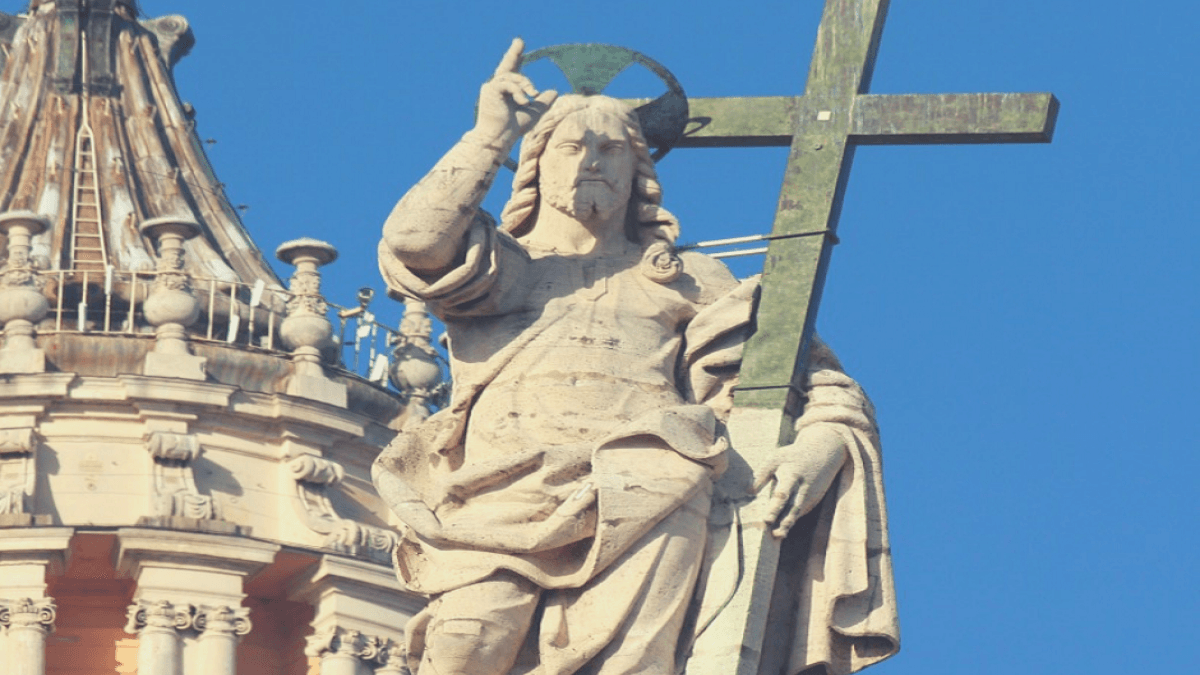The Mystery of the Relics of the Passion of Christ in St. Peter's Basilica
Relics are bodies or objects that have come into contact with the divine and are revered for their spiritual power, performing miracles and healing.
The cult of relics originates from the dawn of Christianity. During the persecutions, Christians drew strength from the examples of the saints and the sacrifice of martyrs, praying on tombs and objects related to them. It was the emperor Constantine (4th century) who gave strength to the cult, building sanctuaries that became the destinations for pilgrimages.
Veneration of the relics was greatly intensified during the Crusades, and in the sixteenth century it was re-launched by the church after the Protestant Reformation, which opposed these practices. The rediscovery of the catacombs and the birth of Christian archaeology stimulated new artistic forms for this cult, and the basilica of Saint Peter set a perfect example in Baroque style.
Gian Lorenzo Bernini scenically arranged the most important relics of the Vatican, inserting them in the piers on which the dome rests, decorated with Carrara marble statues in their niches. These niches are dominated by loggias for the display of the relics, and from the piers one can descend to the Vatican Grottoes where there the tombs of the popes can be found.
The Holy Lance or Spear of Destiny
This is the lance held by the Roman centurion Longinus that pierced the side of Christ, (statue by Bernini) in the north-eastern pillar.
It was in Jerusalem until the mid-seventh century, when with the Arab invasion, the spear was brought to Constantinople, and after the Turkish conquest of the city it was donated to the Pope by the Sultan (1492).
This spear has exerted an enormous fascination in Western culture, and over the centuries other examples had equally as much veneration: the fragment preserved by the French Royals that was dispersed with the French Revolution, the lance of Antioch in Armenia and the "Holy Lance" of Vienna, symbol of the Holy Roman Empire and the Habsburgs, which Hitler had brought to Nuremberg in a delirious esoteric project.
The True Cross
In the north-western pillar stands the statue of Saint Helena (by A. Bolgi), mother of Constantine, who found the Cross of Christ in Jerusalem and brought some fragments of it to Rome, building the Basilica di Santa Croce, the Basilica of the Holy Cross, specifically to welcome them.
The Veil of Veronica or The Holy Face
In the south-western pillar, Veronica (statue by F. Mochi) is the woman who took off her veil to dry Jesus' face during the ascent to Calvary, and miraculously the image of his face remained imprinted on it ("veronica" from the Greek "true image").
The veil has been in St. Peter’s since at least the eighth century; it was solemnly displayed in the first Jubilee (1300), provoking very strong devotion.
The Head of Saint Andrew
Apostle and brother of Peter (statue by F. Duquesnoy), Andrew’s head used to be preserved in the south-eastern pillar, but in 1964 Pope Paul VI donated it to the Greek diocese of Patras.
The relics are not visible to the public—only the canonical sampietrini can access the loggias —but during certain celebrations they are shown from above to the faithful gathered in the basilica.

Vox City, The Vox Group's Dedicated Business-To-Consumer Arm For The Past Five Years, Is Staffed By Veteran Travel Industry Experts With A Combined 21 Years Of Expertise In The Tourism Industry. Let's Explore The Beauty Of Travel In Your Own Way At Your Own Pace.
Vox City International 63 Holly Walk | CV32 4JG Leamington Spa
2025 Vox City, All rights reserved.





